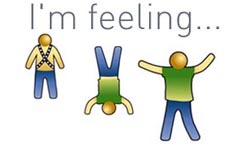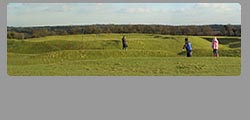
Development work for week 24 (unit 2)
|
Iconic narrative | part 2. The second narrative, based on emotions represented as icons, was worked up using standard HTML and JavaScript. This piece allows visitors to change the icon based on a number of listed feelings. To see a sheet of all the icons developed, click here
|
|
|
Iconic narrative | part 3. This piece in still in development at present but I have added the first working version online for review. I am currently writing the content of the non-linear 'story' that will appear after every button click.
The idea is to take four characters and intertwine their stories in a non-linear fashion, allowing you to read as you go forward, backward, up and down through the piece. To see rough sketches, click here See final version, click here
|
|
|
Space and Time. This piece explores the traditional view about the nature of poetry and painting been divided by the distinction of space and time. In his book Iconology WJT Mitchell argues that the 18th Century writer Lessing sated that writing is temporal (time based) in nature while painting is spatial (representing a space). Mitchell also argues "only that the notion of space and time fail to provide a coherent basis for their [literature and painting] differentiation".
|
|
W.J.T. Mitchell. Iconology - image, text, ideology. 1986 The University of Chicago Press. [ISBN: 0-226-53229-1] 4. Erwin Panofsky. Studies in Iconology: Humanistic Themes in the Art. 1972 [ISBN: 0-064-30025-0]
Gotthold Ephraim Lessing. Lacoon: An Essay upon the
Limitations of Poetry & Painting 1766.
Translated by Edward Allen McCormick
Johns Hopkins University Press; Reprint edition (March 1, 1984) [ISBN:
0-801-83139-3]

